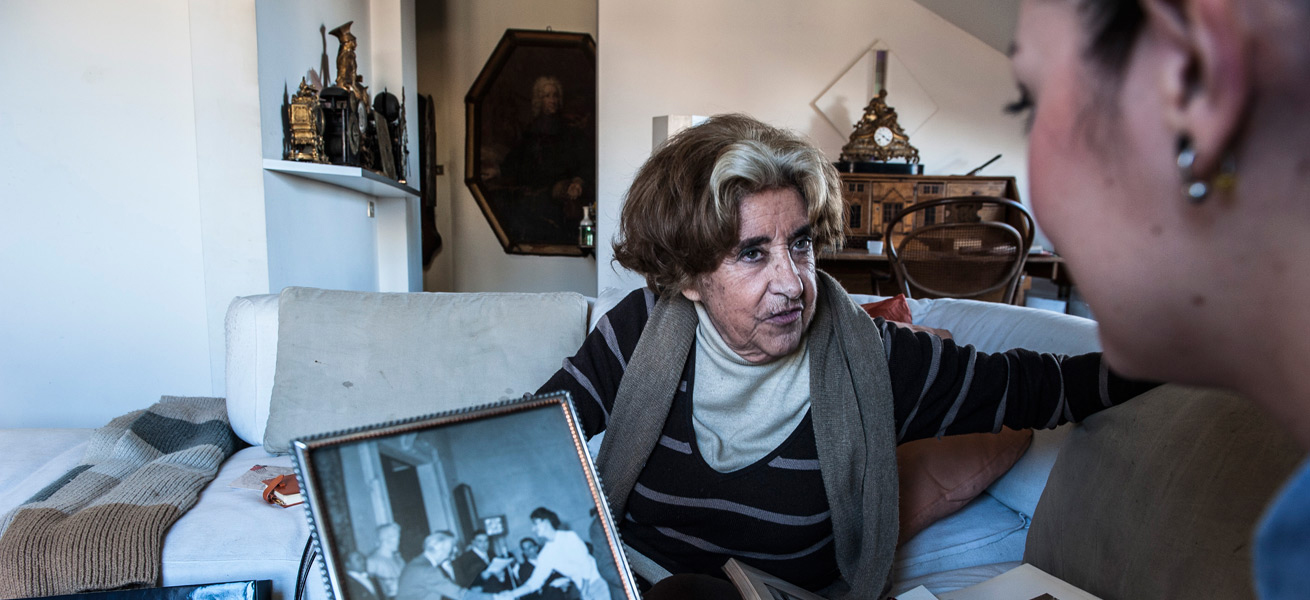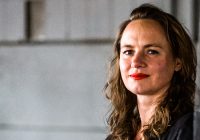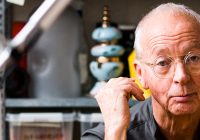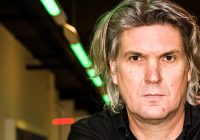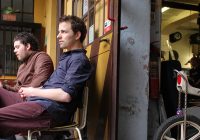Interview with Ornella Noorda, wife of Bob Noorda by Giorgia Zuccari
Photo by Daniele Tamagni
Ornella Noorda’s apartment in Milan. The first thing that catches my eye is a painting by Fontana. Every square centimetre exudes art. Ornella gives me a warm welcome on the top floor, a spacious and light penthouse. She shows me her plants, proudly displayed in the atrium behind large glass panes. We immediately start up an enjoyable conversation that lasts until late in the afternoon. Talking with Ornella, I forget her reputation as a product designer, and the fact that she is the widow of Bob Noorda (1927-2010), the father of Italian graphic design. Bob Noorda was born in the Netherlands, but moved to Italy early in his career. His designs are still visible everywhere in Italy: the logo of Eni, Italy’s largest energy provider; the signage of the metro in Milan; the logo of Italy’s main supermarket chain COOP, and so much more. His presence can still be felt in Ornella’s house. She is a charismatic and lively woman who loves all forms of art and, above all, nature. During her life she worked on elaborate projects and she loves experimentation and assembly. Plastic and glas remain her favourite materials because of their transparency and because they are difficult to mould.
The first thing I was curious to know was about Ornella’s job and that’s how the interview began.
Giorgia Zuccari: What does being a designer mean to you, and how would you describe your work?
Ornella Noorda: If I had to say what I do, I would reply: everything. I like to devote myself to any kind of work in which I can express my imagination and creativity. I’m an all-round designer and every time I am presented with the opportunity to experiment with a new material or to develop a project that I have never done before, I am always very enthusiastic. Even if it means being ‘the wife of Bob Noorda’ my whole life, like Zelda Fitzgerald.
GZ: Which collaborations do you remember particularly?
ON: I remember with great pleasure when Nazareno Gabrielli (founder of the famous Italian brand of leather goods and clothes) asked me to find him an alternative material to leather for a series of shoes and bags. So I designed the fishbone motif for the silk-screened plastic surface. My idea went down very well and the line was a great success. That was the start of a collaboration that lasted ten years. Another commission for Gabrielli was the design and renovation of the shop in Via Montenapoleone. The floor space was very limited. I treated it like a stage set: I organised it diagonally and placed a large mirror at the back of the corridor to emphasise the length of the corridor optically. I placed a number of triangular wings on the sides that functioned as niches in which the shoes and bags were displayed, while Gabrielli suggested displaying the line of silver that I had designed for him on a long glass table in the centre of the corridor.
While talking Ornella kept walking around taking out pictures and books and showing me her works.
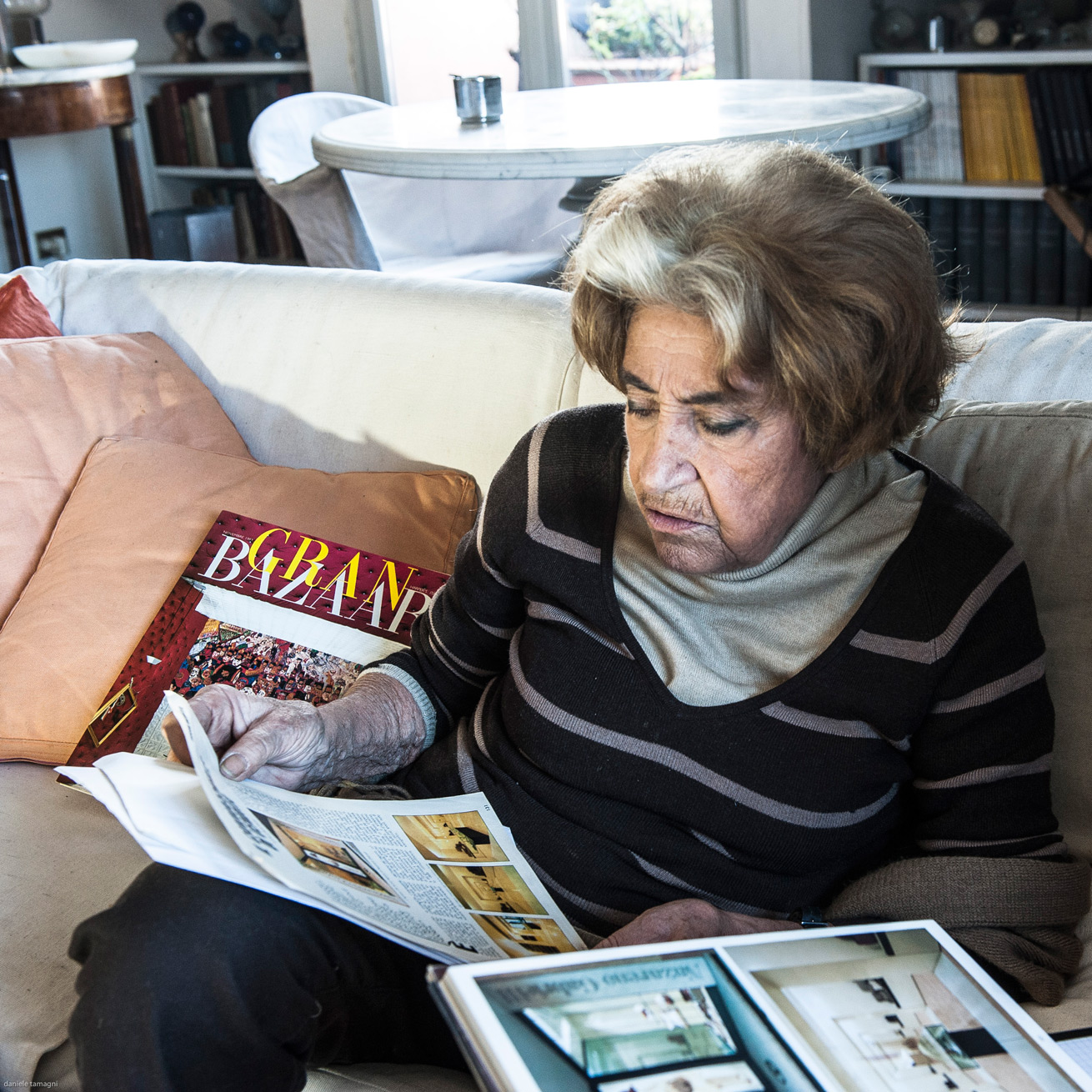
Ornella Noorda
GZ: Which of the products you have designed or projects you have done would you consider your favourite?
ON: There is more than one; certainly, Rinascente marked an important period in my life. I was very young when I started to work for Natale Idea and had the opportunity to experiment in a variety of sectors and materials: from the furniture to the office floor, from the kids line to the hunting floor, from wood to plastic. Another project that I will not forget for its heterogeneity was the design of the Sporting Club of Milano Due. Claudio Dini designed the streets and buildings, while I designed the Sporting Club, including the swimming pool, routing, the basic furniture – divans, lamps – that I had made by Venini, the changing rooms, the bath attendants’ uniforms, the nursery.
GZ: Which prizes and tokens of recognition have you appreciated most?
ON: I was awarded first prize for sculpture in Rome when I was barely eighteen by the then-President of the Republic Segni and sculptor Marino Marini. Then they called me to present me with the Città di Milano award but I was unable to receive it because getting married to Bob had changed my nationality. I was very sorry about that. When I went to Tokyo, I was pleasantly surprised to find that a floor of the Takashimaya department store was exhibiting my articles. This wasn’t exactly a prize, but I regarded it as a grand token of recognition.
GZ: How do you remember your teaching period?
ON: I taught for many years at the Istituto Europeo di Design (IED) in Milan and decided to stop after the death of my son and successive commissions from Tokyo. I taught various courses – packaging, product design, and also publishing for children. I taught my students to abandon fixed frameworks and release their creativity to create something unexpected and surprising.
GZ: What is your relationship with (digital) technology, and how have you experienced the change?
ON: It took a lot of effort to use graphic programmes, but thanks to the patience of my assistant, Paolo Vitti, I can now get by with Photoshop. I like it a lot because I can mix all the memories that I have in my mind and create new ones with great facility. Technology fascinates me. I remember that there was a time when I designed every project by hand. My husband, on the other hand, was irritated because he claimed that the computer did not help the consistency of the ideas and led people to forget the importance of design by hand.

GZ: Did you take part in cultural events? Was there one that you particularly remember?
Soon after my question Ornella showed me some pictures of her journeys with Bob. She was moved remembering how they shared their big passion.
ON: We were often invited to lunches, dinners and lectures. I always attended the Saloni, not only in Milan but also in Northern Europe: France, the Netherlands, and Germany. I feel nostalgic when I think back to the Saloni of the old Lotto Fiera in Milan and it affects me to see everything empty now. I recall with great joy the trip that the Dutch government organised in 2006 in honour of my husband, to highlight the roots of Dutch graphic culture. We set out for Amsterdam and also visited The Hague and Rotterdam. It was a wonderful demonstration of affection and recognition on the part of the Netherlands in relation to Bob, who left his mark on the history of graphic design on an international scale.

Ornella Noorda
GZ: How did you meet your husband?
ON: I met Bob for the first time at the birthday of Arnold Maker, to which we had both been invited. I immediately spotted a man who attracted me, sitting at a table with a girl.
Four days after the first meeting I went to Firm Italia to see him again on the pretext of showing him some of my designs. Afterwards, I got to know him better during a trip to Yugoslavia organised by mutual friends.
GZ: What was Bob Noorda like?
ON: Bob was neither sweet nor smiling: he was an introverted Dutchman, unlike me. We were different and at the same time complemented one another. He was rigorous, elegant and never tried to please people. His character had probably hardened in the period spent in the Dutch colony on Sumatra during the Second World War, where he had fought in the jungle and where he later managed to work for a local newspaper and as a medical assistant. He caught typhus and was left deaf in one ear from the use of an experimental drug. When he returned to the Netherlands, he had to hide from the Nazis and devised a trapdoor with a ladder hidden in the ceiling of the house where he spent days in the company of his brother.
GZ: What was your husband’s experience of teaching like?
ON: He taught visual communications for a period at the IED and afterwards for many years at the Politecnico di Milano. Bob used to say, ‘The process of ideas can’t be explained. I can only say that it’s a slow, individual, creating and reaching process to find the unconditional synthesis. That’s difficult.’ This was also the most important thing he wanted to teach his students. They used to tell me that he did not give them an easy time and rarely complemented them. He was flattered by teaching at the Politecnico. I remember the day they gave him an honorary degree. It was very moving. As we were leaving the hall, we heard interminable rounds of applause and the students stood up when we passed by.
GZ: What did being international mean to him?
ON: Bob worked for important international firms, including Pirelli, Biennale, the Milan, New York and Sao Paolo subways, Agip, Mondadori, Feltrinelli, Barilla, Enel and Cassina & Busnelli, until he and his partner, Vignelli, opened Unimark branches abroad. We travelled a lot; I mainly accompanied Bob on trips to New York and Chicago. I did not like New York very much because of its very tall skyscrapers, which took away space from the sky. I preferred Chicago, which, with its huge lake, gave nature more room and breathing space. I have never liked the mania of the Americans for size and height.
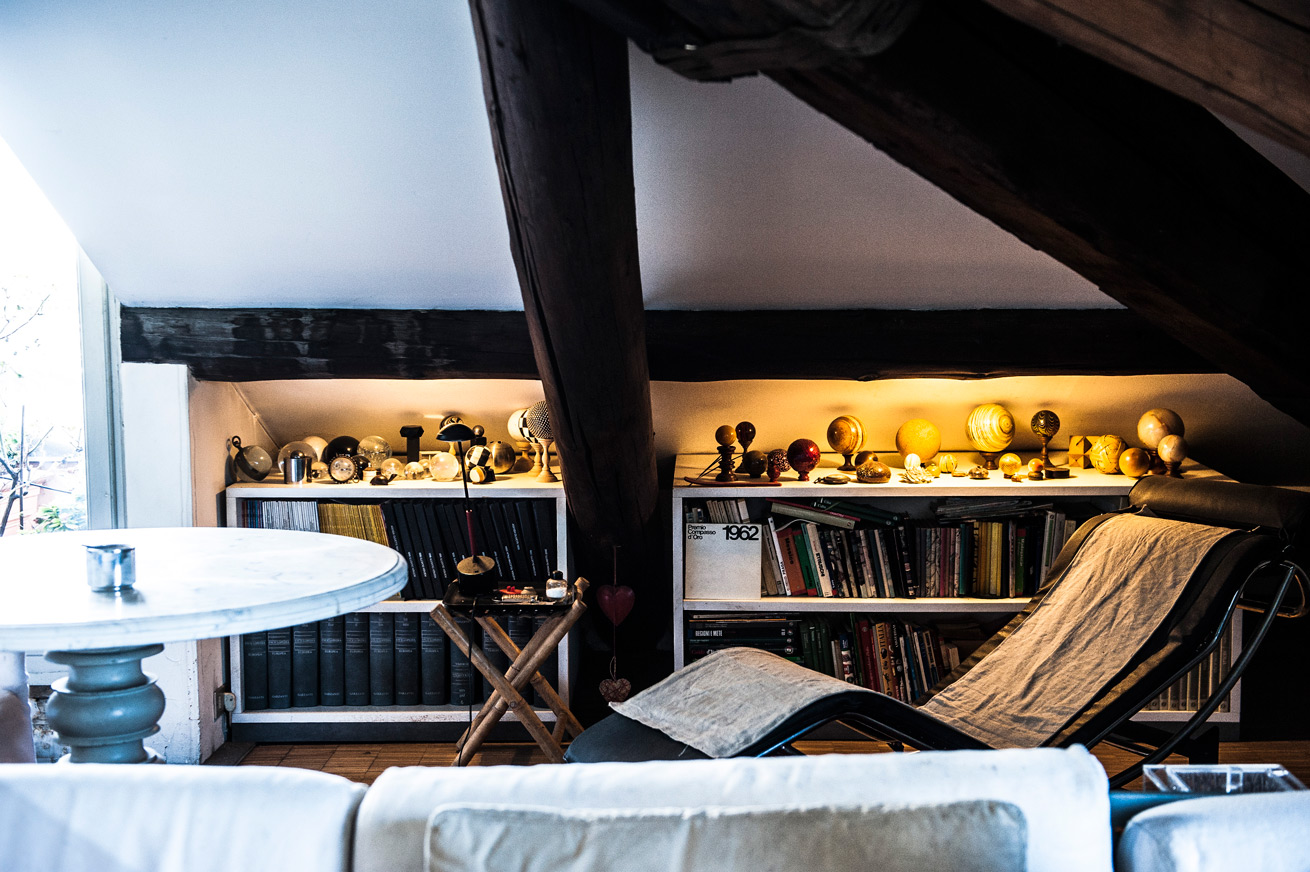
GZ: How did you experience the differences between Italy and Holland?
ON: The first thing, I think, is the beauty of the Dutch panoramas, their capacity to preserve and emphasise nature. I love the canals, the broad sky that overhangs the low-rise homes; it is different from Italy, which has not managed to give the right importance to civic green zones. The Netherlands is very organised with traffic signs and public transport. Austerity dominates, even if the Dutch have always shown themselves to be cheerful and friendly. I greatly appreciate the cycle tracks and, when I was in Amsterdam, it seemed extraordinary to be able to rent a bike at any moment (Milan only learnt how to do so recently). It’s as if the Dutch had done everything before and better than the Italians.
GZ: Did you exchange opinions on the projects you were working on?
ON: We worked on completely different things. While I experimented with every project and created in three dimensions, Bob was the master of graphic art and of the line. He was very consistent and strict with his own work and never said anything about mine. We worked together for Bellato. I designed the whole image, from the lorry to the cassette for the catalogues, and Bob designed the logo. But even when we were working on the same project we worked individually. We gave one another advice, but Bob refused to be influenced. I did round the corners of some aspects of his character and his tastes, but never his work.
GZ: Did Bob have an influence on the furnishing of the apartment? Which object in the apartment reminds you of him most?
ON: As soon as I saw this house, I immediately started to work on it because when I have ideas I can’t stop them. Every time I asked Bob for his opinion, his advice came months later when I had already resolved the question. I designed and furnished the house we lived in and Bob liked it a lot. When architect friends complimented us on the house, Bob responded as though he had taken an active part. It made me laugh and irritated me at the same time. I have a fond memory of that big painting on the wall that used to belong to my family, with Bob imitating the pose to have his photograph taken.
After showing me her family painting on the wall, Ornella invited me outside to the atrium to have a look at her flowering plants.
GZ: Have you passed on the passion for design to your children?
ON: Both of my two children studied architecture. Helbert studied architecture, but was irritated by the frequent questions of the teachers regarding his surname. His real passion was photography. He worked for Vogue, Armani, Dior and other big names in the fashion world. He always used to say to me: ‘Mamma, finally they appreciate me and no one asks me whether I am Noorda’s son’. It’s been 7 years since he died. My daughter, Catharin, started out in her father’s studio, as did her brother, and now she is an architect and she runs a successful studio together with her husband.
Near the end of the interview Ornella suddenly stood up to enjoy the stunning red sunlight over Milan. From her penthouse, the view was breathtaking and we could see the Monte Rosa. Nature granted us a moment of rest and nostalgia.
GZ: What are you working on at the moment?
ON: My most recent works are unica, in which I try to box up all my emotions and travel memories. Based on this, I have decided to create small tables or panels of transparent plastic. I recreate the suggestion of a recollection inside them through photographs that I have taken in those places and a three-dimensional natural object. These creations can be placed on a bookcase but also transformed into a transparent side table. India has stolen my heart and I recall my journey in Gujarat in one of the panels. The humanisation of the fish is another subject of the series of boxes. I have told a story. The idea of boxing nature arose from the statement of the master Abbado (a famous Italian conductor and former music director of La Scala), who promised not to return to the Scala unless Milan had planted a thousand trees. I thought that was great and to show him my appreciation, I dedicated the first of my little square tables to him, in which I put miniature trees and placed a blackbird. I added a dedication: ‘Thanks to the thousand trees, more blackbirds will return to sing their melodious song in our city.’
At the end Ornella asked me to write about her gratitude for the touching and heartfelt speech by Nora Stehouwer at Bob’s funeral in 2010. She would also like to thank her assistant, Paolo Vitti, who has helped her in the research and production of the series of boxes. She wanted to mention that Paolo Vitti is an excellent person who has always made himself available whatever his commitments.
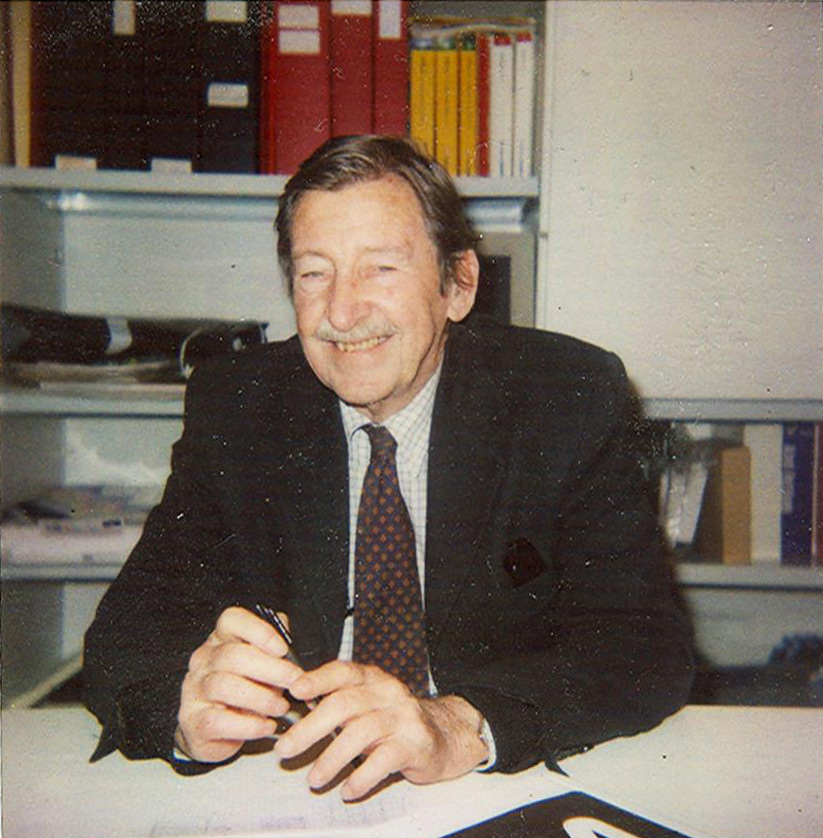
Bob Noorda
Bob Noorda
Amsterdam 1927 – Milan 2010
Bob attended the Instituut voor Kunstnijverheidsonderwijs (now the Gerrit Rietveld Academie) and graduated in 1950.
1954 moved to Milan.
1961 art director at Pirelli, in Milan.
1963-64 consultant for Rinascente and Upim, in Milan.
1965 Bob and Vignelli founded Unimark International (international corporate image planning company).
1960s Designing for the Milan, New York and Sao Paolo subway.
1996-2001 professor of visual communication at Politenico of Milan.
Bob Noorda is associated with many Italian and international brands, including: Coop, Agip, Eni, Touring Club Italiano, Feltrinelli, Mondadori, Agip, Regione Lombardia, Banca Commerciale Italiana, Banca Popolare di Milano, Brionvega, Dreher, Max Meyer, Richard Ginori, Stella Artois, Total, Ermenegildo Zegna, Mitsubishi and Moak. During his career, he designed the corporate image and identity of more than 150 brands.
Awards
4 Compassi d’Oro
2 Bodoni award for publishing
1 gold medal at Biennale of Milan
In 2007, he became honorary member of AIAP (Italian design association for visual communication).
This article was published in Connecting the Dots #7 for the Milan Design Week 2013.
For entire magazine click here.

